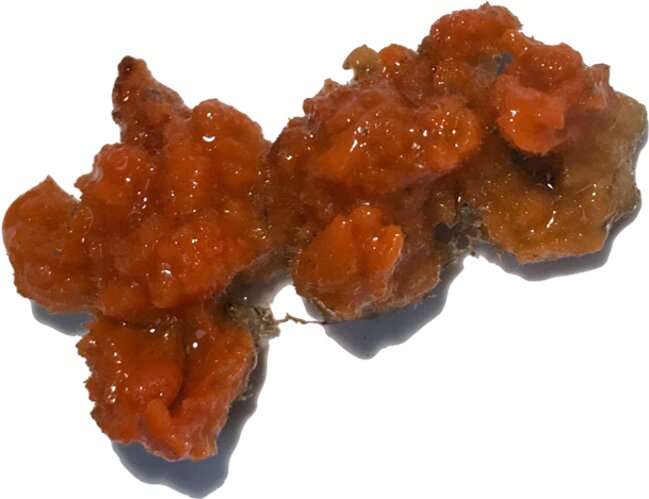Sponges, not just their microbes, make biologically potent compounds

Soft and immobile, sea sponges may appear inert, but these simple animals are rich with chemistry. From them, scientists have uncovered plenty of biologically active compounds, some of which have gone on to become medications. All of these small molecules, however, actually originate from bacteria living within these animals. Now, new research has uncovered an exception. Today, scientists report that sponges themselves, not their resident microbes, produce at least one promising group of compounds.
The researchers will present their results today at the spring meeting of the American Chemical Society (ACS).
The molecules in question are a type of terpene, compounds common within the natural world that often have characteristic aromas. The discovery that sponges themselves make them represents a "fundamental shift" in the field, says Bradley Moore, Ph.D., principal investigator of the study.
"If this animal is making this funky little terpene, what else are animals making?" Moore says. "I think this opens the door to a new emphasis on animals as vessels for drug discovery."
The sponges for this project don't have to travel far. The Moore lab is located at the Scripps Institution of Oceanography at the University of California, San Diego, in a building on the La Jolla waterfront. This proximity means fragile specimens spend less time in transit, and the researchers can house them in tanks filled with their native seawater.
Researchers have long sought out potentially valuable chemistry from natural sources, many of which have been further developed into medicines, including antibiotics, antivirals and cancer therapies. When scientists first began isolating potential drugs from sponges, they assumed that the animals themselves made these compounds. However, DNA sequencing technology eventually revealed that sponges, like humans, share their bodies with legions of microbes and that these single-celled creatures are the talented chemists. Bacteria have since become a major focus for scientists looking to discover potent natural compounds.
However, a genetic analysis conducted by Kayla Wilson, a Ph.D. student in Moore's lab, suggests that sponges, like their microbial residents, can make biologically active molecules that could be useful for humans, too.
The sponge-derived terpenes she studies are unique compared to those from other organisms because they contain nitrogen. They also appear promising from a drug-discovery perspective: Studies have since shown that some have modest malaria-fighting properties.
Although these compounds were already well known, no one had examined the genetic sequences responsible for making them, an undertaking that could pinpoint the organism responsible. To find these biological instructions and see which one they belonged to, Wilson collected the local terpene-making sponge Axinella—a dead ringer, she says, for the Chinese restaurant dish orange chicken.
From within the soup of microbial and sponge DNA pulled from the sponge, she looked for sequences encoding instructions for terpene synthase, an enzyme responsible for a crucial step in making terpenes. With help from another lab member who had studied the same enzyme in corals, she identified these genes. Once she had found them, it became clear which organism they belonged to. "When we looked at the surrounding DNA of this terpene synthase, we noticed that there were a lot of features that suggested these genes are from the sponge animal itself," she says.
Other work in the lab by postdoctoral fellow Vikram Shende, Ph.D., focuses on the discovery of brand-new compounds from within local San Diegan sponges.
He and two of the lab's undergraduate students, Vivian Lin and Samantha Hanauer, extracted compounds from 13 species of local sponges that they culture in aquariums. By testing the sponge extracts for biological activity, the team has identified bromine-containing peptides from Cliona sponges that, in experiments, inhibited the growth of bacteria. The researchers are currently working to determine the molecular structure of these peptides, as well as just how they inhibit the bacteria—information that will help determine if the compounds have potential for use as antibiotics. It's not yet clear if these molecules are made by the sponges or their resident bacteria.
"This is the million-dollar question that we want to answer," says Shende, who will be presenting research from the lab at the meeting. "Determining the genetic origin of these molecules will hopefully give us a glimpse into what their purpose is in their native environment."
More information: Biosynthetic potential of local San Diego sponges, ACS Spring 2022. acs.digitellinc.com/acs/live/22/page/677
Provided by American Chemical Society




















